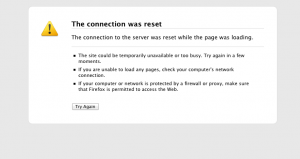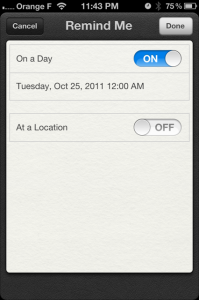You might have encountered this error at one time or another when you try to access a website. The browser suddenly gives you an error which says “The connection was reset”. See the attached image of how it looked like on my browser.
The problem in my case was that I was getting this error every time. And this would happen every time I accessed a domain that I OWNED!
So I called godaddy.com, who hosts my domain and is the registrar for my domain. The agent initially denied that there was a problem (after checking it and discussing it with someone). Then I explained that of all the domains that I visit, I get errors only on this one domain. Then he told me that he will do another check with another “server admin”.
Then sure enough, he came back with this explanation “your website has been experiencing some strange activity lately and in order to protect your website, godaddy has instituted a security layer. Your website is still up and running but this security layer helps in preventing the strange activities and will only prevent those with malicious intent from accessing your site”.
I don’t know if Godaddy wanted me to feel great about this but I did not feel that way at all. I know myself really well and I DO NOT have any malicious intent about my own website! So armed with this confidence, I requested him to remove the security layer which was targeting me from accessing the site. He asked me for a bunch of technical details like my IPAddress, trace route output etc which I duly provided.
After all this, the agent tells me that “Godaddy does not guarantee that they will consider my request favorably. They also will not inform me in any way (phone, email etc) on how they have addressed this problem”. This was the last straw! After making my access to my own website difficult, how can Godaddy claim that they will not guarantee that I can access my site? After mentioning this to him, the agent understood the absurdity of the situation and he told me that “Godaddy will probably address this issue in 72 hours but they cannot give me an update about this”.
Now I am seriously considering moving out of Godaddy. Any options on where to go?

 Follow
Follow



